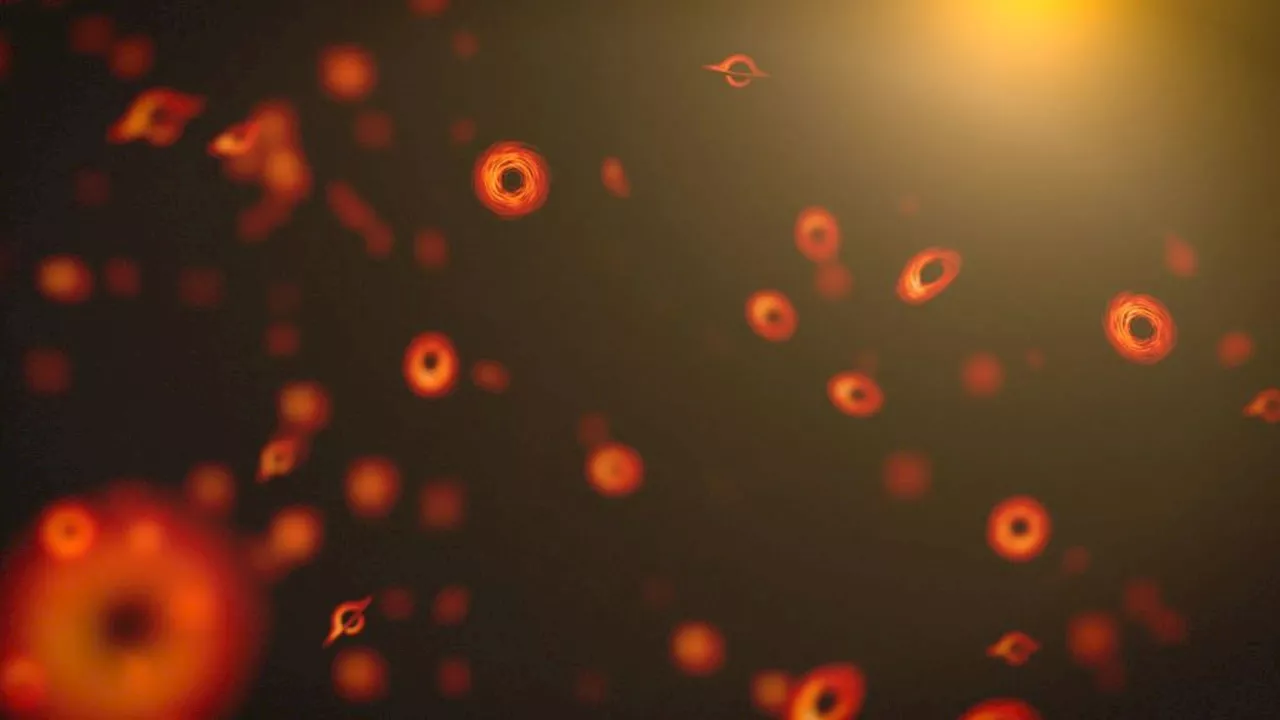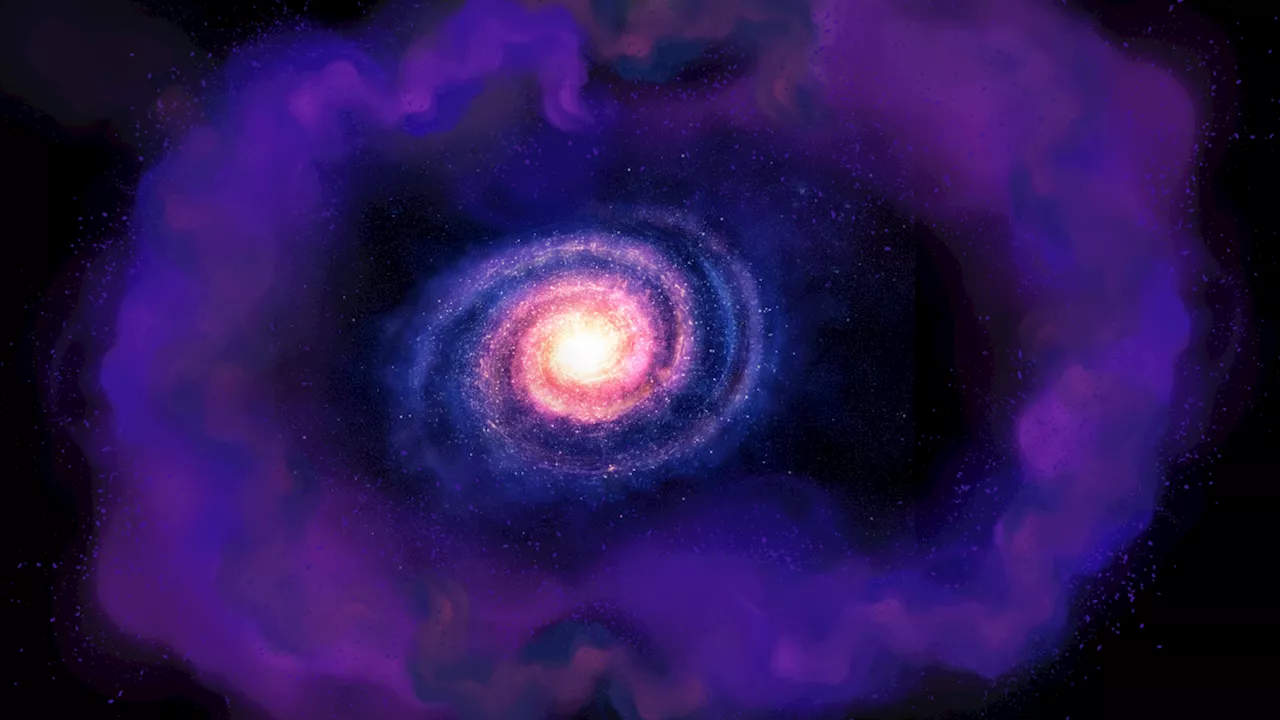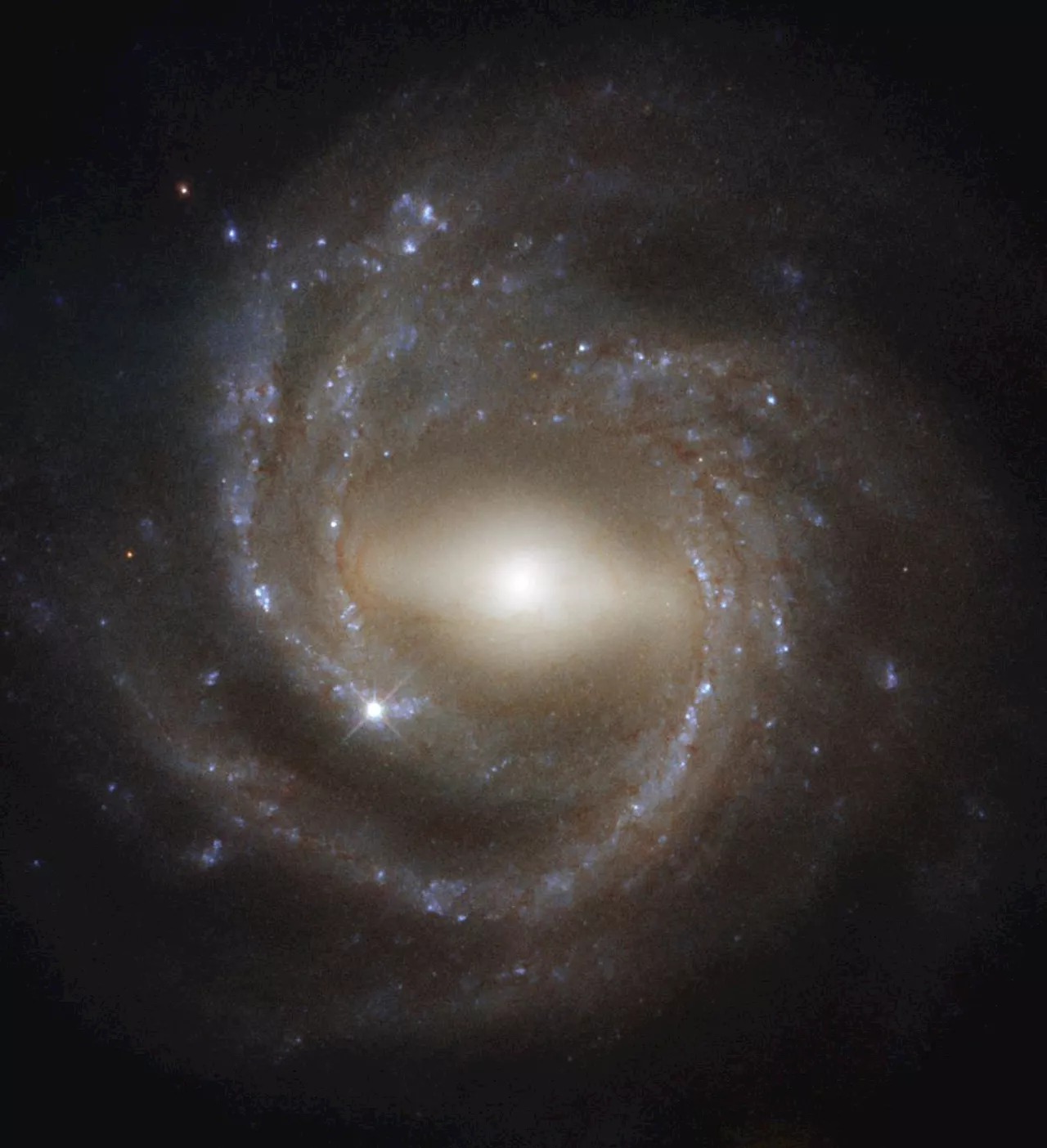This article explores the possibility of fuzzy dark matter as an alternative explanation for the dense cores of galaxies. It discusses the traditional dark matter hypothesis and its limitations, then introduces the concept of fuzzy dark matter and its potential to form large, diffuse clumps called 'dark stars.' The article highlights a recent study using a simple model to simulate the interaction of fuzzy dark matter and ordinary matter, finding that they quickly reach an equilibrium, creating a stable core surrounded by a cloud of dark matter. This suggests a promising direction for future research, with more complex simulations needed to confirm this hypothesis.
This striking image was taken by the NASA/ESA Hubble Space Telescope ’s Wide Field Camera 3, a powerful instrument installed on the telescope in 2009. WFC3 is responsible for many of Hubble’s most breathtaking and iconic photographs, including Pictures of the Week. Shown here, NGC 7773 is a beautiful example of a barred spiral galaxy.
But dark matter might be something else. Recently astronomers have hypothesized that dark matter might instead be incredibly light,. This “fuzzy” dark matter would allow the quantum wave nature of the particles to manifest on macroscopic – even galactic – scales, allowing them to form large, diffuse clumps known as “dark stars.”
Dark stars can be incredibly huge, stretching for thousands of light-years, while still having relatively low density. This would match observations of galaxy cores, which makes this an intriguing hypothesis to follow.in December, an international collaboration of astrophysicists explored how galaxies might evolve in response to fuzzy dark matter. For this first step, they did not attempt to fully recreate an entire complex galaxy.
They then simulated how these two components would interact with each other and evolve. They found that no matter how they start off, normal matter and fuzzy dark matter quickly find an equilibrium, with the two kinds of matter mixing together to make a large, stable core, surrounded by a cloud of dark matter.
The researchers pointed out that this would serve as the ideal representation of a galactic core, which contains higher – but not too high – densities of normal matter. This is the first step to confirming a key prediction of the fuzzy dark matter model. However, there is still a lot of work to be done.
DARK MATTER GALAXIES NEUTRINOS COSMOLOGY SPACE TELESCOPE
United States Latest News, United States Headlines
Similar News:You can also read news stories similar to this one that we have collected from other news sources.
 Fuzzy Dark Matter May Form Giant Stars at Galaxy's HeartA new study proposes that clumps of dark matter might form huge, invisible stars at the centers of galaxies like ours. This could explain the relatively low densities of galaxy cores, which have been a puzzle for astronomers.
Fuzzy Dark Matter May Form Giant Stars at Galaxy's HeartA new study proposes that clumps of dark matter might form huge, invisible stars at the centers of galaxies like ours. This could explain the relatively low densities of galaxy cores, which have been a puzzle for astronomers.
Read more »
 Primordial Black Holes: A Possible Explanation for Dark Matter?A recent study searching for microlensing events caused by black holes in the Large Magellanic Cloud failed to find enough evidence to suggest that primordial black holes, proposed as dark matter candidates, are abundant enough to explain the observed amount of dark matter.
Primordial Black Holes: A Possible Explanation for Dark Matter?A recent study searching for microlensing events caused by black holes in the Large Magellanic Cloud failed to find enough evidence to suggest that primordial black holes, proposed as dark matter candidates, are abundant enough to explain the observed amount of dark matter.
Read more »
 Primordial Black Holes: A Dark Matter Candidate?Recent observations of massive black holes raise questions about the traditional theory of black hole formation. Some scientists propose that these black holes could be primordial black holes, formed in the early universe. Could these primordial black holes be the dark matter we've been searching for?
Primordial Black Holes: A Dark Matter Candidate?Recent observations of massive black holes raise questions about the traditional theory of black hole formation. Some scientists propose that these black holes could be primordial black holes, formed in the early universe. Could these primordial black holes be the dark matter we've been searching for?
Read more »
 Could a Break in a Star Stream Be Proof of Self-Interacting Dark Matter?A team of scientists proposes that a break in a stream of stars around the Milky Way could be caused by a sub-halo of self-interacting dark matter.
Could a Break in a Star Stream Be Proof of Self-Interacting Dark Matter?A team of scientists proposes that a break in a stream of stars around the Milky Way could be caused by a sub-halo of self-interacting dark matter.
Read more »
 Could Primordial Black Holes Hold the Key to Dark Matter?Scientists are increasingly optimistic about the possibility of detecting primordial black holes, ancient black holes that may have formed in the earliest epochs after the Big Bang. These enigmatic objects could hold clues to the nature of dark matter, the mysterious substance that makes up a significant portion of the universe's mass.
Could Primordial Black Holes Hold the Key to Dark Matter?Scientists are increasingly optimistic about the possibility of detecting primordial black holes, ancient black holes that may have formed in the earliest epochs after the Big Bang. These enigmatic objects could hold clues to the nature of dark matter, the mysterious substance that makes up a significant portion of the universe's mass.
Read more »
 IceCube Just Spent 10 Years Searching for Dark MatterSpace and astronomy news
IceCube Just Spent 10 Years Searching for Dark MatterSpace and astronomy news
Read more »
